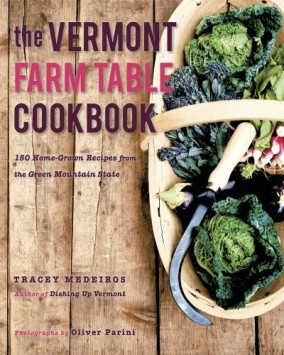Backyard Homestead Book of Kitchen Know-HowThe Field-to-Table Cooking Skills
Growing vegetables and raising livestock is only the beginning of a successful homestead — that fresh food goes to waste unless you can properly prepare, cook, and preserve it. Andrea Chesman shows you how to bridge the gap between field and table, covering everything from curing meats and making sausage to canning fruits and vegetables, milling flour, working with sourdough, baking no-knead breads, making braises and stews that can be adapted to different cuts of meat, rendering lard and tallow, pickling, making butter and cheese, making yogurt, blanching vegetables for the freezer, making jams and jellies, drying produce, and much more. You’ll learn all the techniques you need to get the most from homegrown foods, along with dozens of simple and delicious recipes, most of which can be adapted to use whatever you have available.
Andrea Chesman has written more than 20 cookbooks, including Storey’s The Pickled Pantry, Recipes from the Root Cellar, Serving Up the Harvest, and Mom’s Best Crowd-Pleasers. She has also written a number of books on grilling, including the James Beard Award nominee The Vegetarian Grill. She has contributed to many publications including the New York Times, Cooking Light, Vegetarian Times, Fine Cooking, and many regional and local newspapers. She teaches and does cooking demonstrations and classes at fairs, festivals, book events, and garden shows across the United States. She lives in Ripton, Vermont.
Home-Cured Bacon
Makes about 2 ¼ Pounds
Home-cured bacon is a revelation. Its freshness is what gives it that extra quality, which you won’t find even in artisan bacons you might buy. This recipe, which is adapted from Michael Ruhlman and Brian Polcyn’s excellent book Charcuterie, requires the use of pink salt #1. You can get by with regular salt, but the bacon will look like well-cooked pork (grayish), will taste more like salty pork than like bacon, and will last only a week in the fridge. Instead of roasting the bacon, you can smoke it or hang it to dry in the refrigerator, in which case you will end up with something like Italian-style bacon, or pancetta (but not with the seasonings below). You can easily double this recipe and freeze whatever you won’t eat within 2 weeks. But the recipe is so easy, I have no problem working in small batches — and besides, there is so much you can do with a pork belly that it is hard to turn it all into bacon.
INGREDIENTS
2 tablespoons Morton’s kosher salt
1 teaspoon pink salt #1
2 tablespoons coarsely ground black pepper
1 ¼ teaspoons Chinese five-spice powder (optional; or substitute other sweet spices, such as cinnamon, coriander, mace, cardamom, allspice)
2 tablespoons honey, maple syrup, brown
sugar, or apple cider syrup (page 82)
3 garlic cloves, minced
2 ½ pound piece pork belly, trimmed to a square or rectangle
1. In a small bowl, mix together the kosher salt, pink salt #1, black pepper, five-spice powder, sweetener, and garlic.
2. Put the pork belly in a gallon-size resealable plastic bag or on a sheet pan or in a plastic container. Rub the salt and spice mixture all over the belly. Close the bag or cover the meat with plastic wrap and refrigerate for 7 days, turning it over and rubbing the spices into the meat midway through the week.
3. Preheat the oven to 200 deg. F (95 deg. C). Remove the bacon from the refrigerator, rinse off all the seasonings under cold water, and pat it dry. Put the meat on a wire rack on a sheet pan.
4. Roast for about 90 minutes, until the meat reaches an internal temperature of 150 deg. F (66 deg. C).
5. Cool to room temperature, then refrigerate it until you’re ready to cook it.
Excerpted from The Backyard Homestead Book of Kitchen Know-How. (c) Andrea Chesman. Used with permission of Storey Publishing.











Leave a Reply